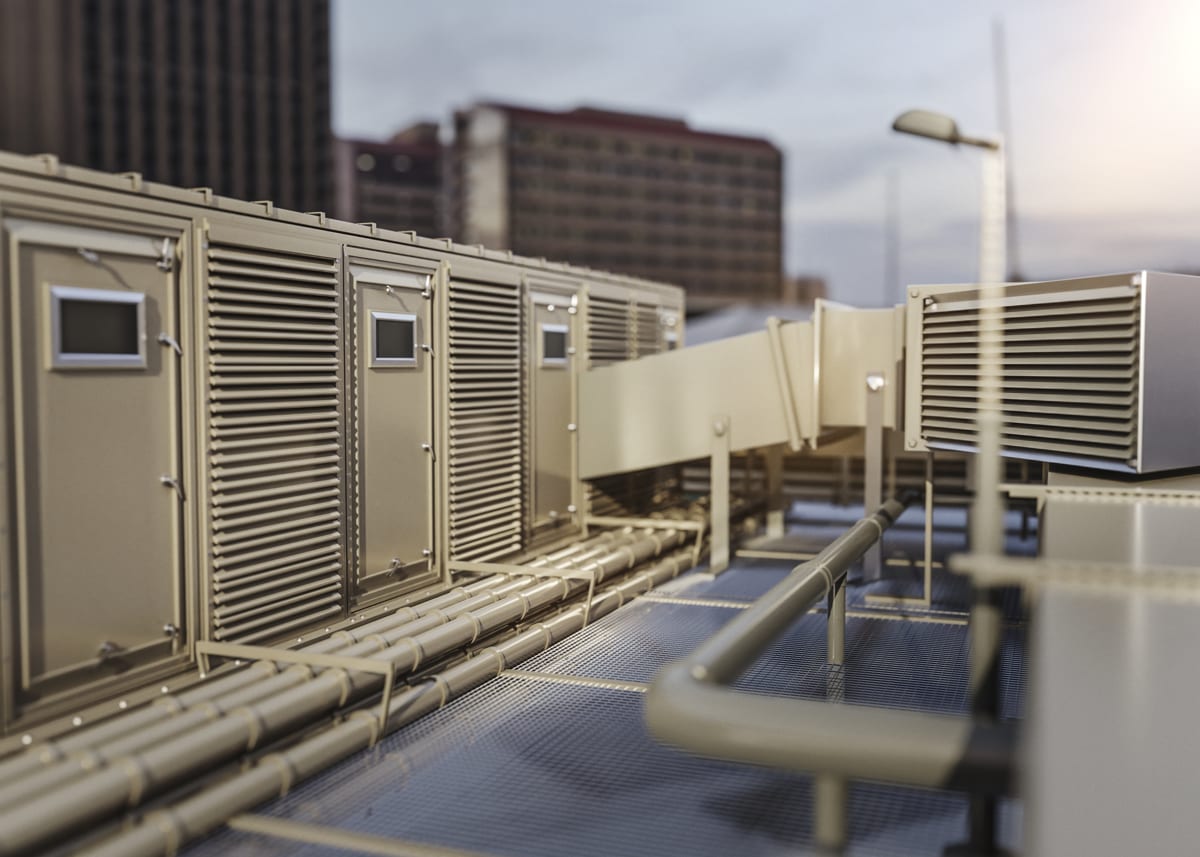
Different Types of Industrial Dehumidifiers & How They Work
Industrial dehumidifiers stand as specialized tools designed to eliminate excess moisture from the expansive atmospheres of commercial and industrial settings. These environments, spanning warehouses, manufacturing plants, and similar spaces, demand precise moisture control for optimal operations.
Varieties of Industrial Dehumidifiers
Within the realm of industrial dehumidifiers, two primary variants hold sway: refrigerant-based and desiccant-based units.
- Refrigerant-Based Dehumidifiers: Operating on a refrigeration cycle, these dehumidifiers cool the air to condense moisture, which is then collected and drained. They prove efficacious in areas with moderate to high temperatures and humidity levels.
- Desiccant-Based Dehumidifiers: These units rely on desiccant materials to absorb moisture from the passing air. Particularly valuable in low-temperature environments and applications necessitating extremely low humidity levels.
Mechanics Behind Industrial Dehumidifiers
Employing sophisticated technology, industrial dehumidifiers manage humidity levels adeptly. They draw in moist air, extract its moisture content, and release drier air back into the environment, iterating this process until the desired humidity level is attained.
Advantages Offered by Industrial Dehumidifiers
- Mould and Mildew Prevention: By curtailing excessive humidity, industrial dehumidifiers combat mould and mildew growth, ensuring the protection of both assets and personnel.
- Equipment Preservation: These devices safeguard vital equipment from moisture-induced corrosion, thereby extending their operational lifespan and averting costly repairs or replacements.
- Enhanced Air Quality: Through controlled humidity levels, industrial dehumidifiers foster superior air quality, fostering a healthier and more comfortable working environment for employees.
- Energy Efficiency: By alleviating the burden on cooling systems, industrial dehumidifiers contribute to energy efficiency, preventing overcooling and optimizing energy consumption.
Critical Factors for Industrial Dehumidifier Usage
- Space Size: Opt for a dehumidifier that matches the dimensions of your industrial space for maximum efficacy.
- Humidity Level: Determine the target humidity level according to your specific requirements and industry standards.
- Maintenance: Regular upkeep, encompassing filter cleaning and component inspections, is imperative to sustain the dehumidifier’s efficiency.
- Energy Consumption: Recognize the varying energy requirements of different dehumidifiers to effectively manage operational costs.
4 Different Types of Industrial Dehumidifiers by Seraphic
-
Dehumidifier (Floor stand type)
The floor-standing industrial Dehumidifiers are crafted for heavy-duty use in large spaces. Engineered with advanced technology, our units offer capacities ranging from 60L to 480L per day, catering to various needs.
With options for single-phase and three-phase power, and air circulation rates from 720m³/hr to 5000m³/hr, we ensure efficient moisture removal. Our eco-friendly R410a refrigerant adds to our environmentally conscious design.
-
Ceiling Type Dehumidifier
The Ceiling Type & Duct Type Dehumidifiers offer groundbreaking solutions for maintaining ideal humidity levels in any space. Engineered for efficiency, they range from 2800W to 17250W in power, ensuring effective moisture removal.
Models like HADD-8 to HADD-50 boast capacities from 192L/D to 1200L/D, with air flows from 1800m3/hr to 50000m3/hr, catering to various room sizes. Compact and well-designed, they offer easy installation.
-
Desiccant Dehumidifier
It is an advanced moisture control with our Desiccant Dehumidifiers, revolutionizing traditional methods. Models like KC-400SD to KC-2500SD offer varied capacities for diverse spaces, with process air flows from 420m3/hr to 2550m3/hr. Designed for flexibility, they operate seamlessly in temperatures from -15°C to 50°C.
-
Duct Type Dehumidifier
Duct Type Dehumidifiers are designed for heavy-duty use in industrial settings. Engineered with advanced technology and precision, these dehumidifiers ensure unmatched efficiency and durability.
With various models available, each tailored for specific capacities, they offer versatile solutions for diverse needs.
Conclusion
Beyond selecting the appropriate type and capacity of dehumidifier, it’s crucial to consider ongoing maintenance and monitoring protocols. Regular upkeep, including filter cleaning and component inspections, ensures the continued efficiency and longevity of these vital systems.
As technology advances, so do the opportunities for innovation in industrial dehumidification. Exploring avenues for increased automation, smarter energy management, and integration with broader facility control systems could unlock even greater efficiency and cost-effectiveness.
While industrial dehumidifiers already play indispensable roles in modern workplaces, continuous evaluation, and adaptation to evolving needs and technologies will be key to maximizing their benefits in the future.
Frequently Asked Questions (FAQs)
How does an industrial dehumidifier work?
Typically, industrial dehumidifiers operate by drawing air inside using a fan. This air flows over chilled coils, causing moisture to condense and collect in a container below. Afterward, the now drier air is warmed up again and circulated back into the environment using another fan.
What is the difference between a dehumidifier and an industrial dehumidifier?
Compared to typical household dehumidifiers, industrial models are significantly sturdier and designed specifically for use in commercial and industrial environments. Moreover, many of them can be customized to provide comprehensive environmental control, including filtration, cooling, and heating capabilities.
How to choose an industrial dehumidifier?
Your choice of dehumidifier should consider its intended application and the environmental conditions it will operate in, as well as the size of the area it will serve. These factors will dictate the appropriate size, operational mode, and installation or usage instructions.
